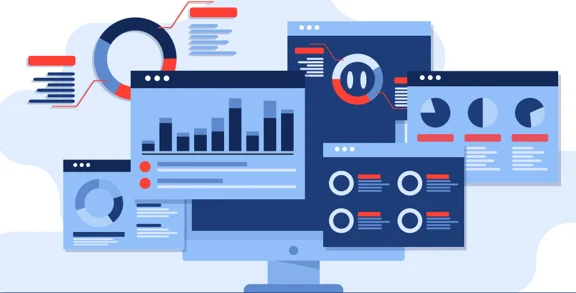
Risk Innovations: Captives + Parametric Insurance for Difficult Risks
Screenshot 2023-08-03 162744Parametric insurance is an innovative insurance product that pays out benefits on the occurrence of a predefined event which would provide reasonable assumption of financial loss, without the need to quantify the actual loss incurred. This provides both contract certainty, and a simplified and immediate payout response. The triggering events should be objectively measurable and verifiable, such as a certain magnitude of earthquake or the reaching of a specific hurricane windspeed.
When parametric insurance is applied within the captive insurance model, it adds a level of sophistication and additional risk management tools to the captive’s arsenal by providing an insurance coverage for risks where loss data may not be identifiable.

Financial Model of Parametric Insurance within a Captive
The financial model of incorporating parametric insurance into a captive insurance company relies on predefined, measurable indices. When a certain event triggers these indices, the policy pays out a predetermined amount, providing immediate liquidity from the captive and thus to the parent company. These funds can then be used to cover various direct and indirect costs associated with the triggering event.
For example, if a company's captive insurance covers business interruption risk and incorporates a parametric cover for hurricanes, a payout would be triggered once a hurricane of a certain strength hits a predefined location. The payout amount would not depend on the verification of the quantum of an actual loss but rather on the parameters defined in the policy.
Advantages of Integrating Parametric Insurance into Captives
Potential Disadvantages
Captive Case Study: Parametric Insurance for Contagion
An SRS client derives all their revenue from livestock, so an outbreak of any disease affecting the animal population will have a significant negative impact on its earnings and brand reputation. Contagion outbreaks in their continent have occurred for decades, at times devastating the livestock sector and causing bankruptcy for many companies in the supply chain.
With no reliable commercial market for this type of risk, SRS developed a unique solution that integrates parametric insurance coverage into a captive insurance company to provide coverage.
Risk Radar: Tracking Outbreaks
The specific contagion is a contagious viral disease affecting both domesticated and wild livestock. It spreads rapidly through contact with infected animals or contact with contaminated pens, trucks, clothing, or feed. There is no vaccine available and there is no risk to human health.
The company’s home territory has been disease free since 1995, but continually tracking outbreaks revealed that there has been a resurgence within the continent. As an example, one country was disease free between 1986 and 2018 but reported 643 outbreaks between 2018 and 2019, Similarly, other previously disease-free countries have recorded outbreaks following long periods of being contagion free. It became clear the client needed to proactively address the risk to avoid potential financial failure.
The disease is predominantly spread through wild animal populations and as that population has grown and migrated, associated disease outbreaks began spreading towards the company’s home territories. There have also been random jumps of outbreak, typically caused by illegal importation of animals and animal products.
How the Policy Works When an Outbreak Occurs
Parametric policies are designed to kick in when a specified trigger event occurs (such as Contagion), but the event must be validated by an independent entity (typically called the ‘Calculation Agent’) before the agreed upon payout is settled. An example of an objective and reliable data source for an animal-based outbreak would be the Ministry of Agriculture, Fisheries & Food within the European Union (EU)
Within the EU, the European Commission (EC) has established standards for what local regulatory entities (such as the Ministry of Agriculture, Fisheries & Food) need to do when an outbreak occurs. If an outbreak has been officially declared, regulators must establish zones to help curb its spread and as such SRS was able to design various verifiable triggers and associated Payouts awards reflecting the degree of impact, as an example:
| Outbreak Zones | Distance/Radius | Payout |
| Infected Premises | 0k m | 100% |
| Protection Zone | Within 3km | 80% |
| Surveillance Zone | Between 3 km and 10 km | 60% |
| Implicated Zone | Between 10 km and 100 km | 20% |
The Implicated Zone: Perception of Infection
Including a measure of protection against potential damage to reputation and shareholder value within a parametric policy required detailed negotiations with commercial underwriters. While not the policy’s primary purpose, this aspect of the coverage reflects the reality of what happens to a company’s value when the public believes the outbreak is not under control. Quick access to claim funds allows the company to implement a crisis communication program, which may require immediate and costly public relations campaign(s).
Getting it Done: Program Design Highlight
A parametric may be a viable way to bridge a lack of data or alleviate complex claims management, but equally parametrics could be an avenue to incubate unique or difficult risks within a policy form that can attract the commercial markets. It can be challenging to describe what you want to accomplish if you are proposing something entirely new and so SRS has found that one key to getting it done is using smart analogies to other known coverage types.
In the above case study, SRS have showed underwriters that the proposed contagion parametric policy was directly analogous to windstorm parametric policies. Similarly, SRS have supported a proof of concept for a unique agri-risk product that was analogous to a simplified product recall coverage to establish underwriters’ interests.
Strategic Risk Solutions (SRS) has a reputation for leading the charge when it comes to captive insurance management. Establishing SRS Italy and becoming the only manager in the country with...
Everyone had a wonderful day at the Windlesham Golf Club for the African Survival Annual Golf Day! The primary focus of the charity is to provide access to education in...
Tens of thousands of participants joined Neil Campbell on the 26.2-mile challenge of the London Marathon. SRS Europe is proud to support Neil and his charitable run. Neil is a...
SRS Guernsey Scales New Heights Our amazing SRS Guernsey office is currently taking part in an exciting and challenging local fundraising event called The Everest Challenge. This unique endurance event...
'Tis the Season for SRS Canada SRS Canada spent some time volunteering at a toy organizing event for children in the Halifax area. SRS Canada has been actively participating in...
SRS South Africa- East London Supports Animal Welfare Our SRS South Africa team is proud to support animal welfare organizations this quarter by raising much-needed funds for the SPCA (Society...
As climate change escalates the potential severity of certain weather-related natural disasters like hurricanes and wildfires, corporations face increased threats to their operations and financial stability. Captive insurance strategies are...
SRS Bermuda Helps Preserve Bermuda’s Unique Ecosystems with the Trunk Island Project SRS Bermuda proudly contributed to the Trunk Island Project, a conservation and education initiative known as a “living...
By: Chuck Scherer Catastrophe bonds, also known as cat bonds, are a crucial component of the insurance industry's risk management toolkit. Typically, these bonds provide insurance companies with financial protection...
The decision to buy or sell a captive insurance company isn’t made that often but can be a significant strategic opportunity under the right conditions. Andy Hulme, SRS EVP of...
Download the SRS whitepaper on Cell Vehicles, Domicile Differences. Protected Cell Companies – 25 Years In By Peter Child, CEO SRS Europe Twenty-five years ago, Protected Cell Company (‘PCC’) legislation...
Captive Insurance Times recently published an article featuring industry participants, including Isabel Mettetal SRS' Director of Cayman Captive Management, discussing their hopes for captives in Latin America, as well as...
Combining captive insurance with Insurance-Linked Securities (ILS) can offer significant long- term value and additional risk transfer capacity and capabilities for enterprise-scale companies. The ILS sector acts as a reliable...
Setting the Standard SRS has managed captives and other insurance vehicles for more than 25 years, and in that time, we’ve defined and operationalized the services a high-performing insurance company...
Setting the Standard SRS has managed captives and other insurance vehicles for more than 25 years, and in that time, we’ve defined and operationalized the services a high-performing insurance company...
Setting the Standard SRS has managed captives and other insurance vehicles for more than 25 years, and in that time, we’ve defined and operationalized the services a high-performing insurance company...
Anna Pereira, SRS Bermuda How can the captive industry adapt to the developing impact of climate change and adopt measures to mitigate impact to their shareholders, themselves, and the natural...
Leveraging the Barbados Insurance Brand The year 2021 was one of significant growth for captive insurance in Barbados. There were 34 startups and according to the statistics released by the...
There is tension at the heart of every captive insurer. This fundamental tension arises from the fact that for every captive shareholder is also in some way, shape, or form...
The material presented in this report was the subject of our webinar: Captive Insurance – The State of the Market, held on Wednesday February 23, 2022. The captive insurance industry...
SRS’ Peter Child, CEO Europe and Richard Paris-Smith, Client Services Leader-Europe were recently featured as speakers during the Airmic Captive Forum. Peter Richard spoke about governance within the captive process, while...
Corporate insurance buying strategies are changing. Maybe it has taken the challenges being encountered in the continued hard market to finally shake things up. Buyers are getting frustrated, hemmed in...